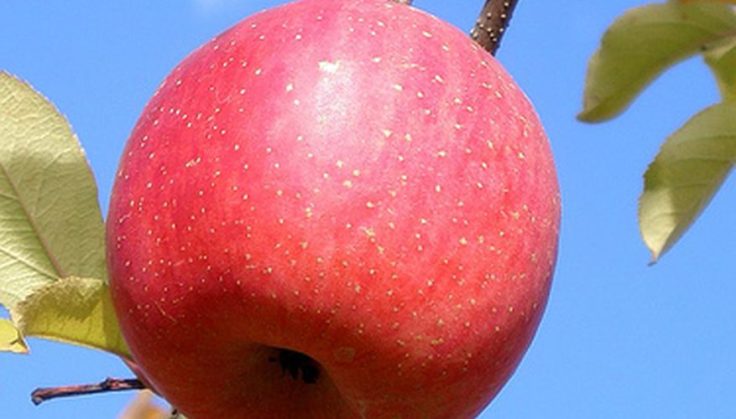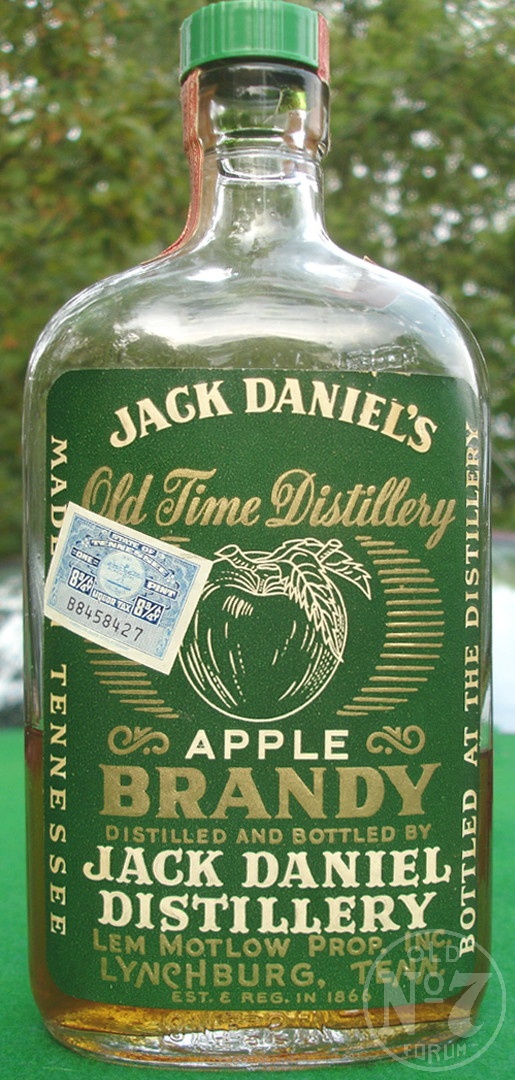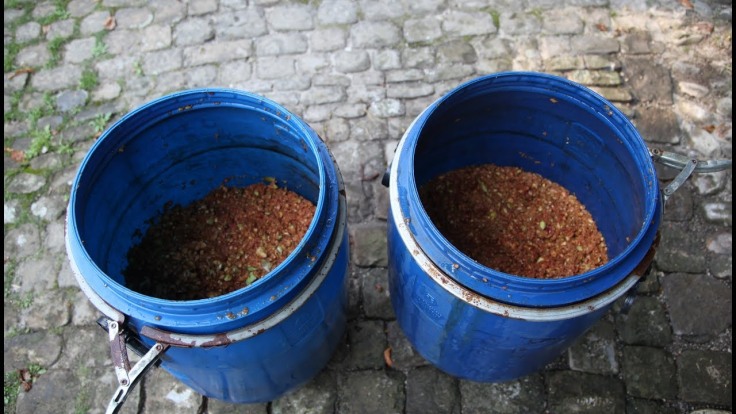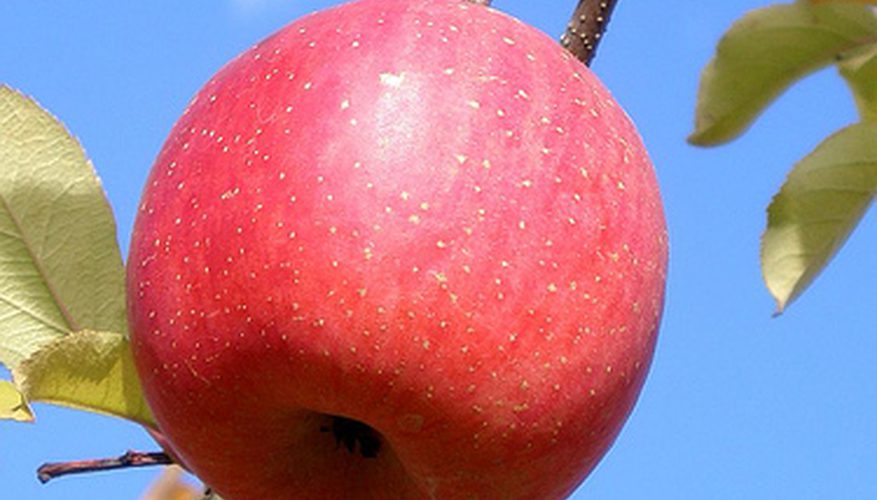
The Turley Winesap Apple. Despite the revised history of this apple it was in fact Johnathan Turley of the Daisy Spring Mill in Mitchell Indiana (Spring Mill) who introduced this apple which was used to produce apple brandy at his distillery.
Making historic mid-western Apple Jack. A hands on “tiny batch” tutorial.
By: Alan Reed Bishop alchemistcabinet.wordpress.com spiritsoffrenchlick.com
Apple brandy has seen a resurgence in recent years mostly in thanks to creative bartenders looking for a spirit more flavorful than the aged grain spirits more commonly available on the market. Another factor in the popularity of fruit brandy in general has been the resurgence of interest in true small batch and hand-crafted spirits and their history. The west coast of course has been a bit of a mecca for artisan brandy distillers for some time and they make some fine spirits of great quality, however near everyone is using the same methodology which is based heavily on the traditional production of Norman Calvados.
For someone historically inclined such as myself the allure of distilling lay in the fact that there are so many variables in production and so much diversity in flavor available within categories if one simply explores all the historic and innovative options available, after all, the Normans weren’t the only distilling culture to have distilled the fruit of the tree of knowledge. Customers too seem to be searching for the next more interesting flavor. I have no doubt that “traditionalist” brandy distillers from the west coast background will be none too pleased with the outlay of production I will introduce here and they should have no doubt that I am not inclined to care too much. The end goal of my outlay is the same as theirs; a good potable spirit of notable quality, happy distillers, and happy customers. The outline I will give here is based upon apple brandy production in the Ohio Valley from the early 1800’s-1914.
First a little history about Southern Indiana apple brandy. A vast majority of the settlers who came into the Indiana territory in the years between 1806-1816 were of German ancestry and carried with them a long lineage of brandy production which they put into use on their new Hoosier farms as soon as they could get those farms productive. Vast orchards of both grafted varieties and seedling varieties of apples, pears, and peaches were planted all over the Hoosier hills and more often than not were made up of varieties intended for the productions of Cider, Moby, or Brandy. These German settlers were practical, organized, and very productive people who kept their eye on the proverbial ball at all times and they made great use of all they had on hand. Their production methodologies were consistent with their frugal life style and they wasted little of nothing. An orchard and a copper still made for an incredibly self-sufficient business, particularly when coupled with a distilling service which could trade a share of brandy to a neighbor for a larger share of raw material such as apples delivered by the wagonload. Seeds and pits of the fruits feeding the distillery were often replanted (though they would not come true from seed, in most cases they would make fine feedstock for future distillations) in nursery beds which subsequently were replanted into more orchards. The excess of all this production was shipped to foreign markets, particularly down river to Louisville Kentucky and subsequently New Orleans via the Tarascon Brothers, brokers in all types of spirits from the Ohio Valley.
The methodologies employed by these distillers were quite different than those employed by the modern craft brandy distillers on the west coast. They were labor and cost efficient and could easily be implemented with a minimum of equipment by both professional distillers and home distillers and should be implemented most importantly by distillers teaching living history at various parks. The end goal was a delicious spirit, double pot distilled, and well balanced. This method in fact made the quality of Southern Indiana apple brandy (and Northern Kentucky) known the world over and eventually made the 2’nd & 7’th tax districts of Indiana the largest apple brandy producers in the world for 40 years (a tradition broken only by prohibition and the subsequent destruction of orchards by farmers looking to plant a new cash crop).

These distilleries were often small and consisted of a larger 200-300-gallon stripping still made of copper (though in the early days wood was common) and a smaller 50-100 gallon doubling still. Fermenters were fashioned from open ended barrels, usually of 50-75 gallons in capacity, and contrary to modern methodology apple presses were rarely used so pure juice fermentations were became the exception and not the rule. Apple brandy became one of the main staples of distillery production in particular because transportation at the time was poor and the apples would rot before they could be shipped to foreign markets, subsequently the number of orchards in the locale meant that apples were very abundant and the distiller could have pretty much as much or the crop as he could process in a good year. Many of these distilleries would eventually reach capacities closing in on 20,000 gallons for a six to eight-month fermentation and distillation season.
The pace of work was such that the distilleries ran 6-7 days a week and often two shifts a day. Apples were brought in by wagon loads, hand sorted and usually washed in a large stone trough. Rotten apples were tossed to the cattle and pigs on the periphery of the property and good fruit was sent on the the mash man to work his magic. The apples were subsequently treated in a number of different ways depending on individual protocol and the equipment of the distillery. Often the cores were removed and the apples were either ran through a piece of grinding equipment reducing them to the consistency of a heavy apple sauce or they were thrown into a barrel where they were mashed via a long-handled club or implement. Generally, the rule of thumb was at least two lbs. of apples to a gallon of capacity. To this mixture spring water or well water was brought to a boil and was added to top up the barrels and the barrels were left in a cool dark area to begin fermentation via the natural yeast arriving on the skin of the apples into the facility. Distillers who were more deeply involved in their art may have cultivated a specific yeast they liked via a donna jug and kept a strain going for quite some time. This mixture would top out at maybe 5-6% alcohol by the time fermentation had finished in 4-5 days. Most of these fermentations would have been naturally infected via lactic bacteria which would have increased the mouthfeel substantially and have nocked down some of the sharper acids. The apples would have been a blend of anything and everything available at the time and some old grower lists as well as nursery catalogs of the area list as many as 15-20 different strains.

Occasionally a second method was used for the production of apple brandy or apple jack, though it appears to have been the minority of production here in southern Indiana. If a press were used on the farm-distillery sites for the removal of apple juice it is likely that the juice was to valuable of its own accord to make brandy from, instead it was afforded for apple sorghum or for apple cider (fresh and fermented) and subsequently the waste from the press itself was used for raw fermenting material similar to modern day grape skins and the production of Grappa. Some historic texts even go so far as to define apple brandy as coming from fresh broken or pressed apples and apple jack as coming from the skins and left-over pomace of the apple crop. This historically seems to be a relatively minor proportion of production however.
Both of these methods are still very common, particularly amongst old world European folk distillers and itinerant distillers. Particularly in regards to spirits such as Slivovitz and Polinka. In later years sugar has been used to raise the specific gravity/brix of this fruit mash wine for distillation.
Now that we have covered the history you can glean some idea of where this fermentation/distillation methodology is headed for recreating this historic style of Apple Brandy.
First, let me say, a wooden barrel is not necessary, however, I have found it advantageous in situations of historic and small batch distillation for building up beneficial microorganisms (to an extent, we don’t want to distill vinegar) as well as for holding the heat from the boiling water to further break down the cell walls of the fruit for better flavor extraction. Wooden barrels are much harder to sanitize and great care should be taken to do as such prior to each use. There are a number of substances that can be used to sanitize the barrels but I have found the method employed by the old distillers to be satisfactory. First, find a suitable and explosion free area outside with little risk of fire, empty the barrel of any and all contents and spray it out with clean filtered water until it is visibly clean, allow the barrel to air dry. Second, fill the barrel ½ full of high quality pesticide free straw and pour over it 1-2 gallons of foreshots or heads. 3. Safely set fire to this mixture and allow it to burn until the straw has been burnt up, extinguish the fire thoroughly with several gallons of water. Rinse the barrel well! Use your senses to determine if any off aromas are still occurring, if all is well fermentation may commence.
A quick notation should be made about microorganisms in fruit distillation; in this recipe we will adjust the PH of the fruit mash to a level acceptable for yeast and unfavorable to the grown of microorganisms, however, it is my experience that in most traditional fruit brandy production some level of Acetic Acid/VA is not only present but warranted as part of the profile, we aren’t talking about enough that it is noticeable to the average consumer of the spirit, but it certainly adds something to the character of the spirit. The same is true of Bettenomycees, both of these are considered “faults” by modern American distillers and Vintners (thank your beer brewers for being a bit more open minded) but they are essential components of drinks all over the rest of the world and the American pallet is advancing in such a way as to once again appreciate such “quirks” of finely crafted spirits.
Select your apple varieties for fermentation based on taste parameters. Generally, a blend of from 3-7 varieties makes for the best brandy, this selection is obviously influenced by what you have available to you. It is my experience that the best policy if only commercial varieties are available to you as opposed to a plethora of heirlooms is to use as many different types as you can gather. Avoid completely Red and Golden Delicious. Wash the apples thoroughly with water and set them aside to ripen further if purchased from a store (I place mine in a wooden barrel somewhere warm but out of direct sun). Remove the cores from the apples and use whatever tools are convenient to you (blender, industrial grinder, all well sanitized obviously) to reduce the apples to pulp. Leave the skins intact while grinding and fermenting as these will add a pleasant tannic note to the finished distillate Add the pulp to an equal amount of water and bring to a boil or add to a wooden barrel and cover with boiling water. Hold between 190-212 for ½ hour. Stir this mixture often and stir it well. Top up with water for fermentation and make a yeast starter of one-part mash to two parts water to be pitched when your barrel reaches 90 degrees F. Test the PH of your mash once the water is added and adjust accordingly to between 3.2 and 3.5 PH using either citric acid, lemon juice, or malic acid. Now is a good time to check your specific gravity or brix as well. You will likely be extremely lucky if you reach 1.050 (12.5 Brix or roughly 6.25% potential ABV). A mixture of 90% white sugar and 10% brown sugar may be used to chapitalize the fruit mash and bring it to a high potential alcohol. This should be a small adjustment just to raise specific gravity slightly to yield a bit more alcohol. Brown sugar is vital to this operation as its impurities add just enough congeners to the distillate to provide some contrast to the apple flavor and to make the flavor a bit more pronounced. A good target would be 1.056 or 14 Brix (roughly 7% alcohol).
Fruit brandies produce a noticeable amount more heads and foreshots, particularly apple brandy as pectin breaks down into wood alcohol/methanol and aldehydes. To solve this problem, spend some time studying the yeast you will use to ferment with and try to find a type that produces lower levels of aldehydes and subsequently less SO2 and H2S compounds as you will drastically reduce the number of heads produced from your subsequent distillation.

Double pot distill the finished wine with a careful eye on the doubling run in order to keep the temperature of your distillate between 55-70 degrees Farenheight. Place a piece of white felt under your worm or condenser for the distillate to pass through prior to collection in a tank during your doubling run and toss all foreshots down the drain. Once your stripping run is finished collect 10% of your fermenter size of spent wine from the still and add this to your next fermentation. This is a method similar to Bourbon sour mashing and will help correct your PH for the next run as well as provide dead yeast cells as nutrients to the yeast in your subsequent fermentation. All collected heads should be returned with new wine to the next stripping run and all collected tails should be returned with low wine to the next doubling run, this will increase mouthfeel and consistency in the brandy.
The collected brandy should average 135 proof. This can be barreled as is for ageing or placed in glass or stainless for short term storage where exposure to air will help to mellow the spirit. Proofing should be accomplished slowly over a period of several weeks using as neutral water as you can access (however no distilled water please), I have found rain water to be ideal as it maintains some character without defined flavor.


Leave a comment